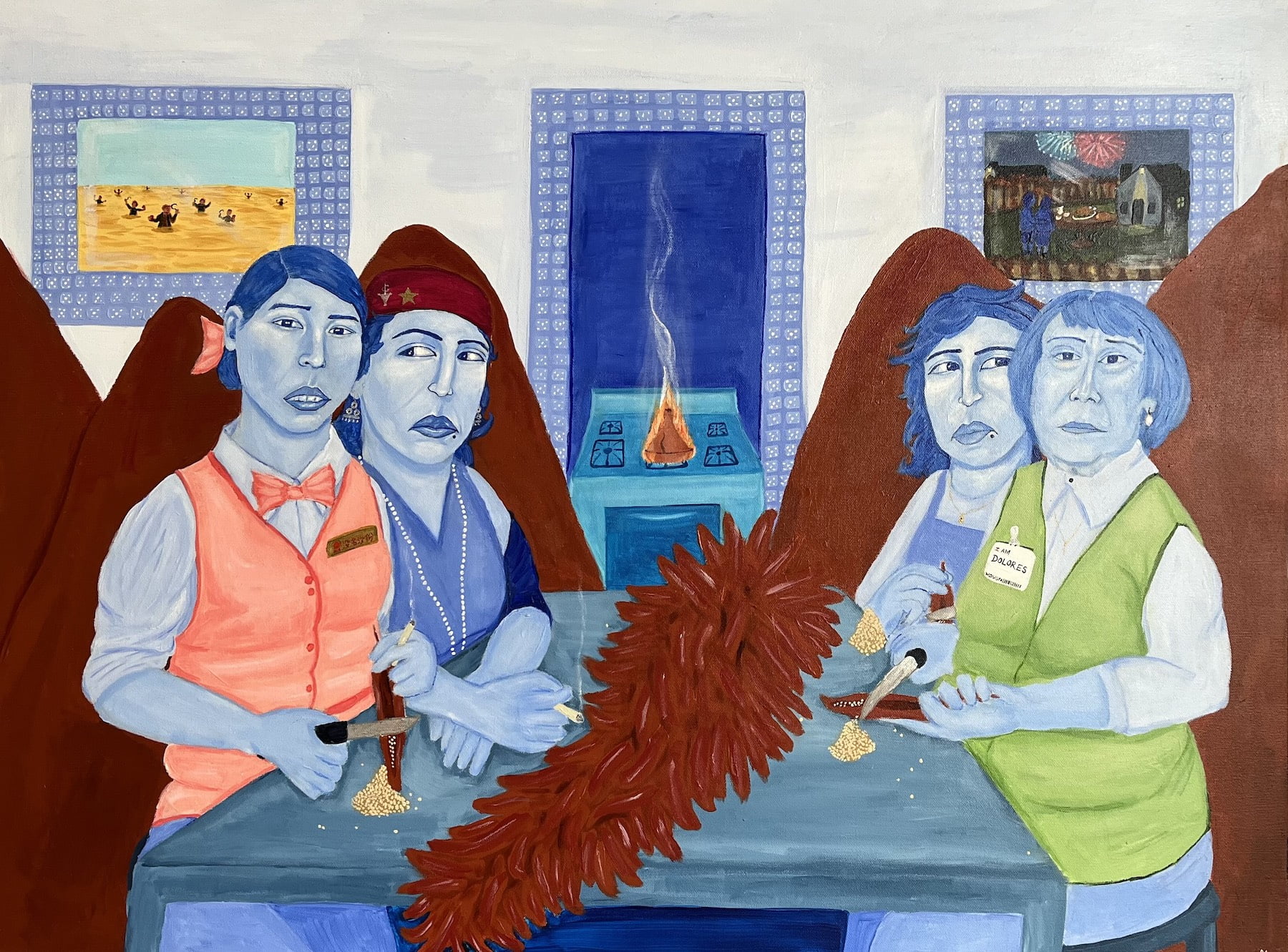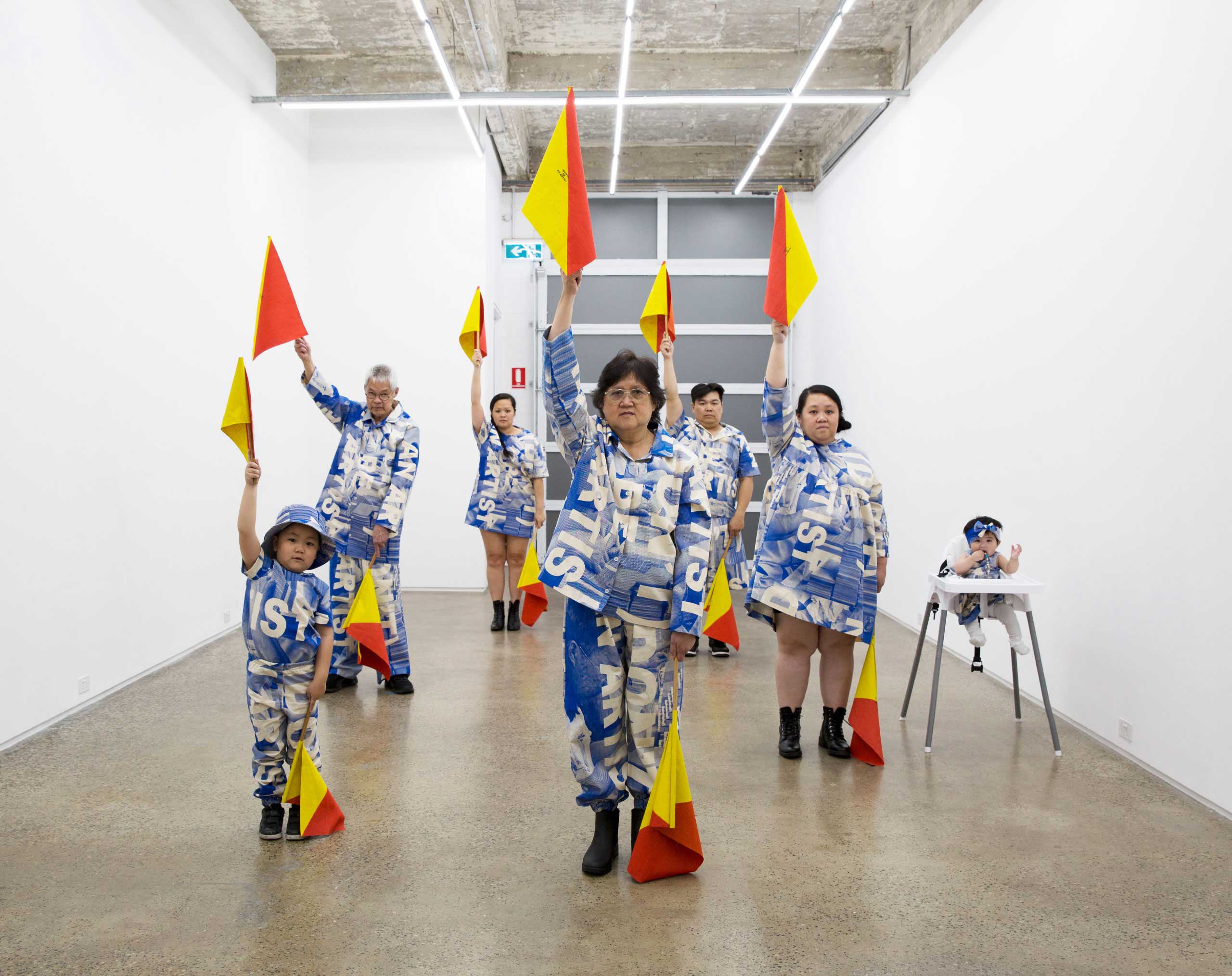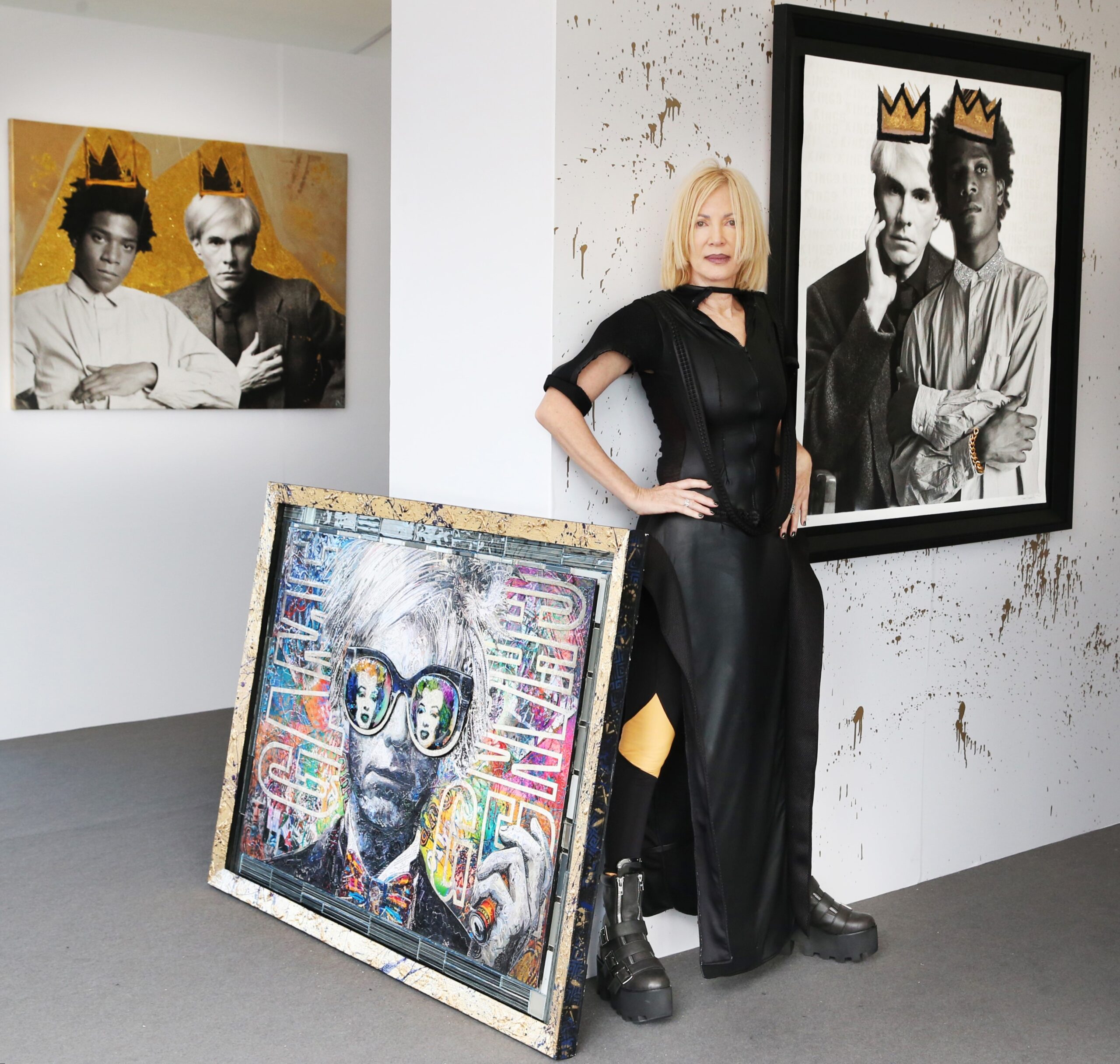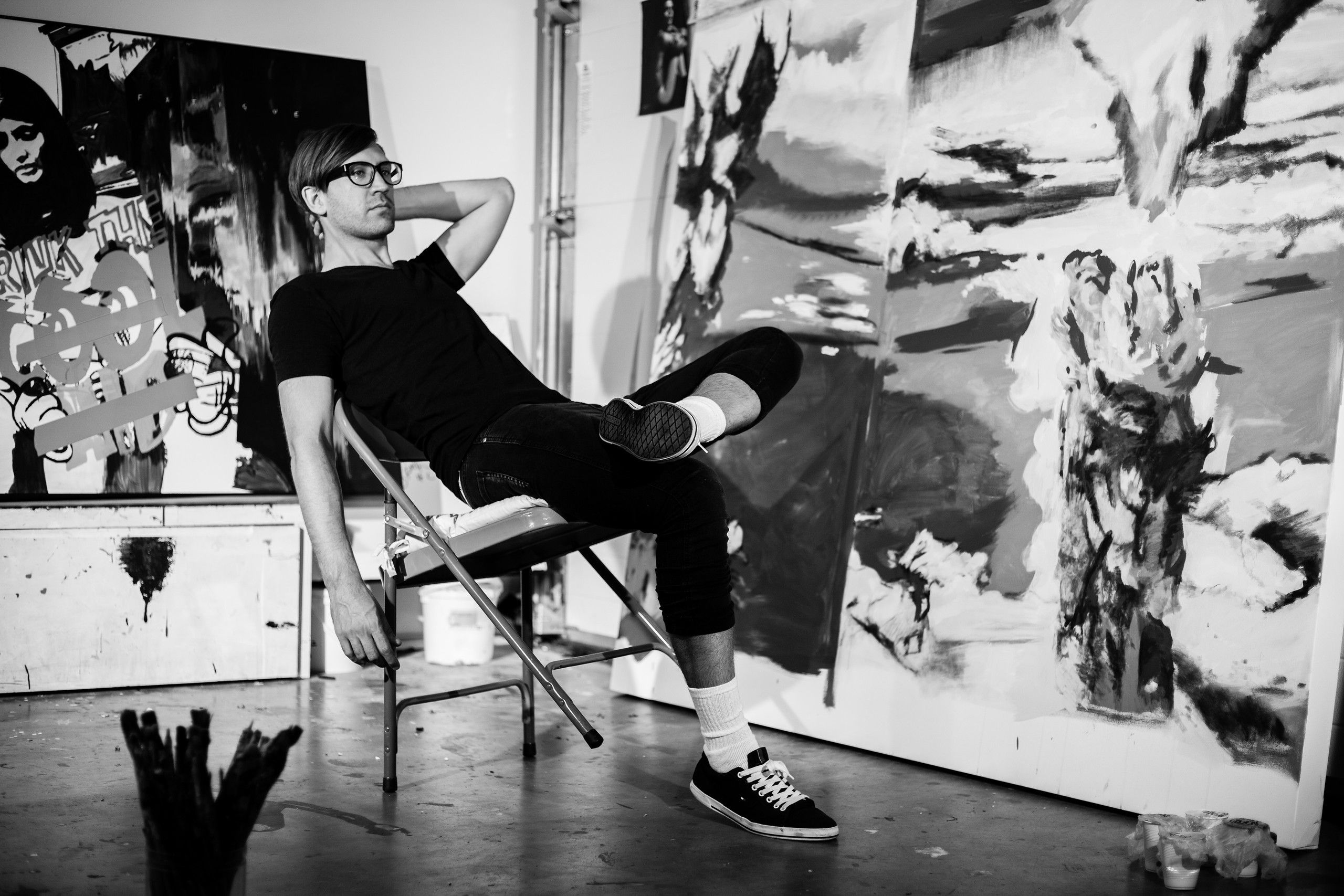
In Conversation with Stuart Semple
1883 Arts Editor sits down for a chat with artist, curator, activist and all-round creative mastermind Stuart Semple to find out about his many projects and ask what he thinks the future hols for the arts in the digital age.
A Van Gogh exhibition at the National Gallery when he was a child and a close encounter with death at the age of 19 sealed his fate and set him on a path to become an artist.
Over the past twenty years, Stuart Semple has made art – stretching across different media, his work has a distinctive social and political edge to it; curated exhibitions – among others, the Mindful show exploring the relationship between creativity and mental health, and featuring no other than Tracey Emin, Mona Hatoum, Sarah Lucas, Mat Collishaw, Jake and Dinos Chapman; engaged in activism – he has supported Amnesty International and is an an Ambassador for mental health charity Mind; fought for a more inclusive art industry, and even embarked on a crusade to “democratise paint” – his quarrel with conceptual artist Anish Kapoor in response to the latter’s purchase of exclusive rights to Vantablack, the “world’s blackest material”, has made headlines across national media.
In spite of the limitations put forward by the pandemic and a decreased pulmonary capacity as a consequence of an early Covid infection, this last year has been particularly busy for Semple: he has co-founded VOMA – a fully immersive, CGI-powered, virtual art museum aiming to become a hub for debate around the digitization of the arts sector – and opened a gallery space in central Bournemouth, his hometown.
1883 has met with Stuart Semple to get the lowdown on his many projects.
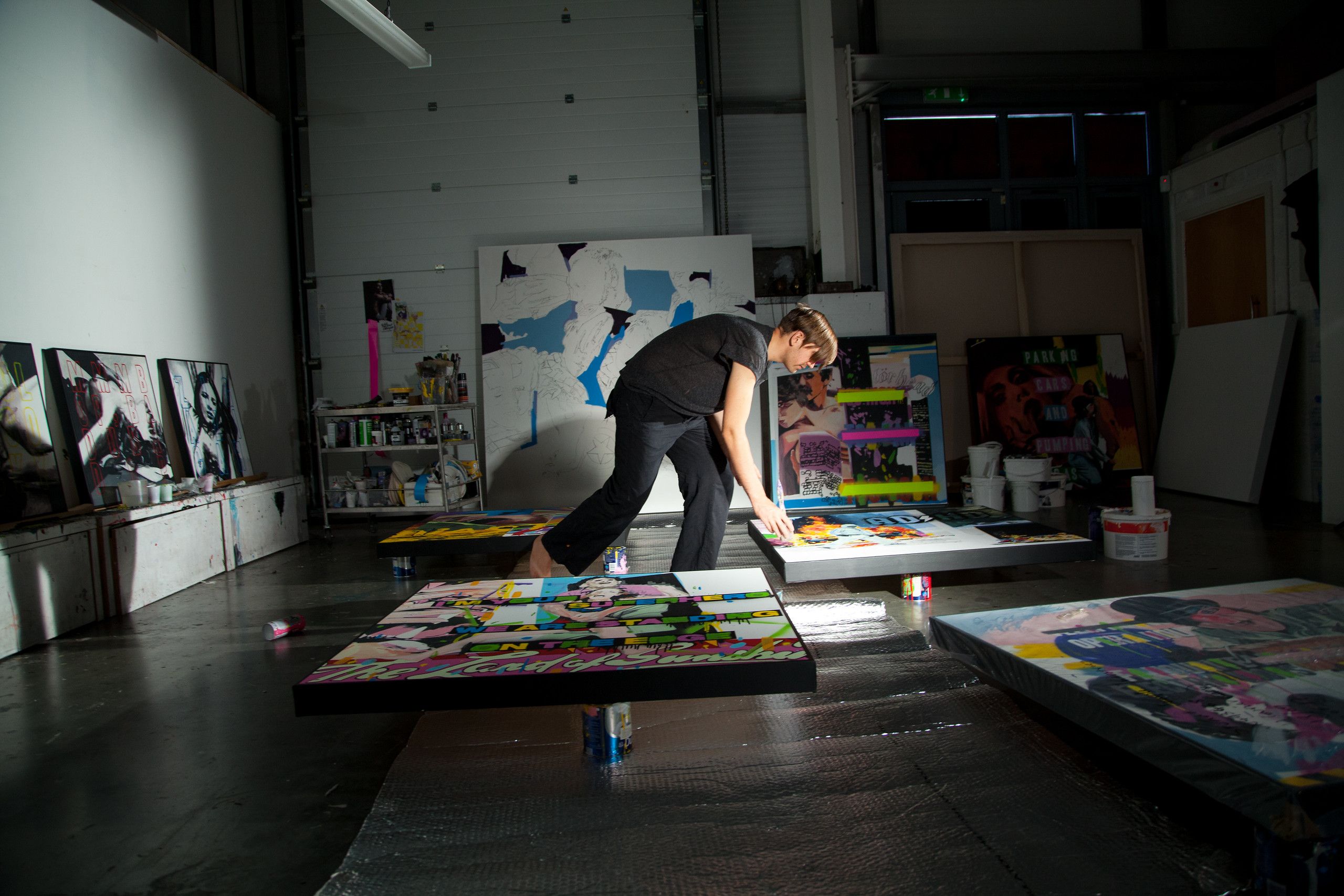 Stuart Semple © Nadia Amura
Stuart Semple © Nadia Amura
Hello Stuart, thank you for finding time for 1883 Magazine.
You certainly don’t like to fiddle around, and despite the limitations and challenges of the Covid-19 pandemic, you seem to have a lot on your plate at the moment. Can you tell us what you have been working on lately?
I feel like I’m very busy, there’s a lot happening in the studio at the moment. I’m deep into making a new series of paintings about masculinity. I’m gearing up to move the GIANT gallery into our new space and to start delivering the program there. I’ve been recording a podcast and I continue to work on making new art materials to share with other artists too.
Tell us a bit more about your art podcast: how did the idea come about?
I realised that I have some really inspiring friends from a whole variety of different disciplines and backgrounds, and we have some really wonderful conversations, so I thought it would be nice to share some of that with others by recording our chats, so through that the podcast was born.
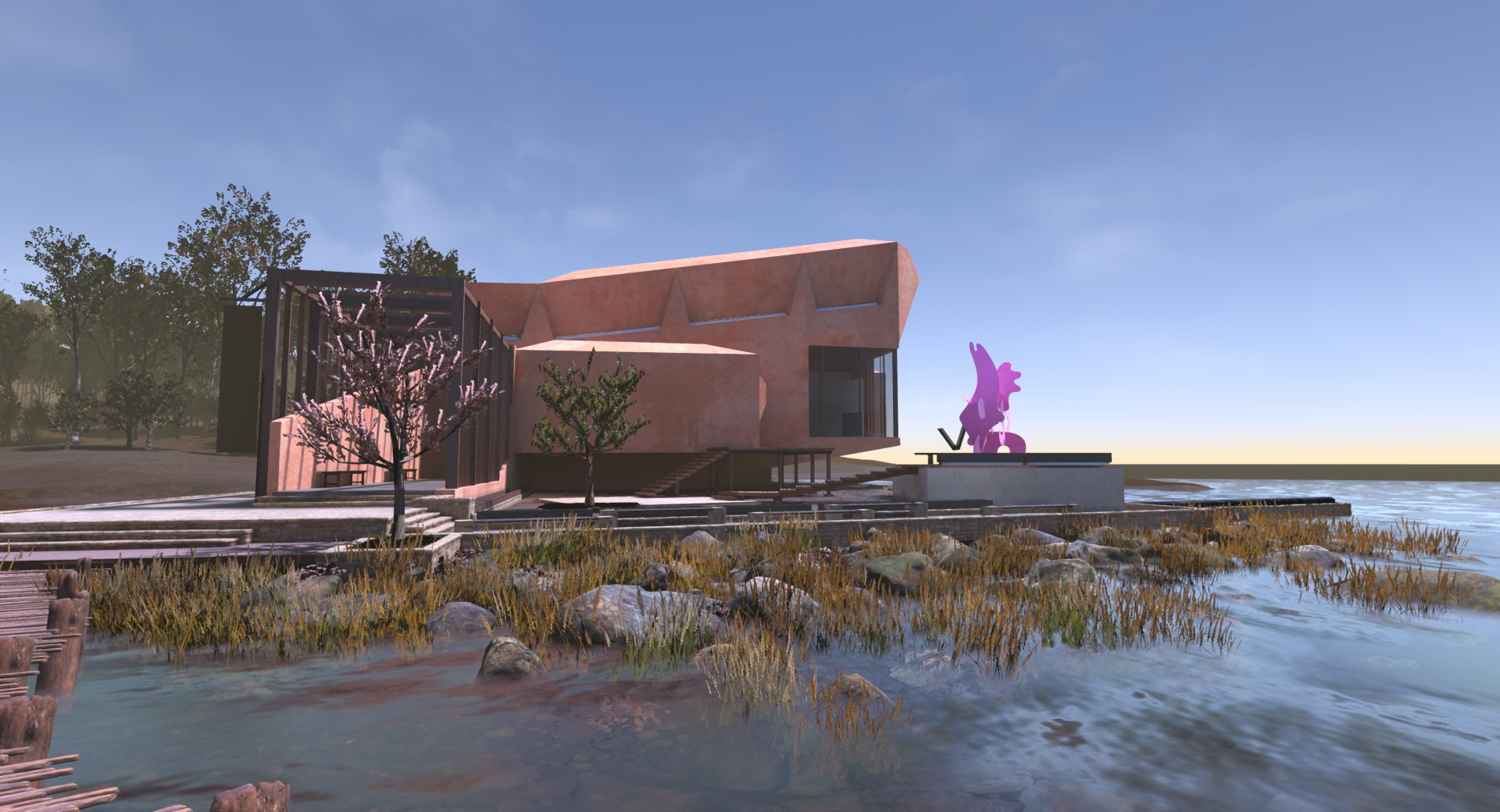 VOMA
VOMA
What topics will you cover?
It’s a very loose thing, because each guest has their own experience and perspective, their history. So each conversation seems very different, but at the core I think we always seem to orbit around ideas of self expression, creativity and perhaps how art and artists can shift the social dial in some way.
You mentioned GIANT, the exhibition space you founded in Bournemouth; given the uncertainty around the course of the pandemic, I wondered, what prompted your decision to open an art gallery?
It’s a good question, I think there’s a few factors with the gallery. The first is that the high street has changed drastically, not just because of the pandemic, but physical shopping has reduced, so there is now an opportunity to access good spaces in an affordable, or even supported way. I feel like one of the most positive uses for these space is to connect the public with art. In my hometown, there has never been a proper contemporary gallery or museum space, so with GIANT I am working to bring a program of international art to the town. I grew up here and it was a cultural desert.
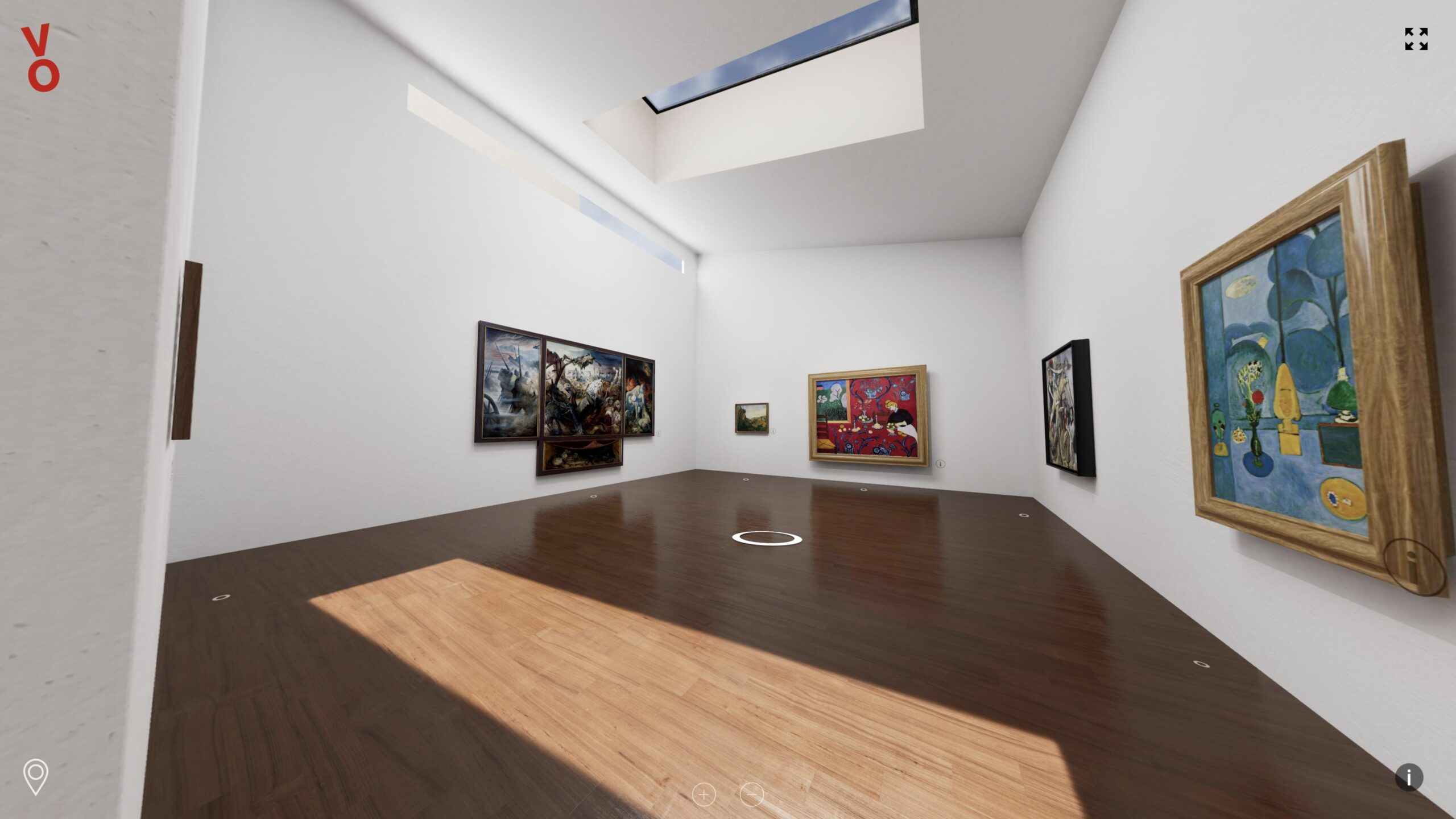 VOMA
VOMA
How do you see the future of art spaces?
I think we will see a shift away from capital cities. A major move to decentralise the cultural capitals. I think we will see more independent artist-run spaces. I believe smaller towns and cities will embrace the arts as a way to connect communities through culture.
Out of curiosity, has the epidemic affected you at all on a professional or even personal level?
Yes, I’ve had a few big projects I was working on cancelled. Working was very hard, a lot of what I rely upon to work was closed and in general a lot of the industry was on pause. On a personal level I got Covid at the start of the pandemic, and sadly I’m left as one of these Covid long-haulers. I’m a year in now and my lungs have not recovered, which means I have a lot less energy than I used to, and I still can’t work a full day without suffering. So I’ve found myself having to do a lot less than I would like. I can’t paint for more than a couple of hours at a time.
The Covid pandemic has accelerated the digital evolution of the art industry, and many art players have taken their business online. A little over a year ago, you launched VOMA, the world’s first virtual art museum. Can you tell us about it and how it came to be?
I made a virtual gallery when I was a teenager in 1999, but I think I was too early and it never really took off. Technology has moved on a lot since then. When the pandemic came, I saw a lot of galleries making online viewing rooms, and I thought they weren’t a very good experience. I have always believed art should be for everyone and, I love public spaces and museums, so it felt like a good time to create a free, non-commercial space where anyone can connect with art and dialogue from all over the world. My good friend Lee Cavaliere directs VOMA, and we work with a couple of amazing geeks from the USA who build everything and the virtual building was designed by Emily Mann, who is an inspired architect. Actually, we just made ZFIRA.com a new space that uses everything we learned at VOMA, but it’s a way museums, collections and curators can collaborate with our team to present their own exhibitions in a stunning new building.
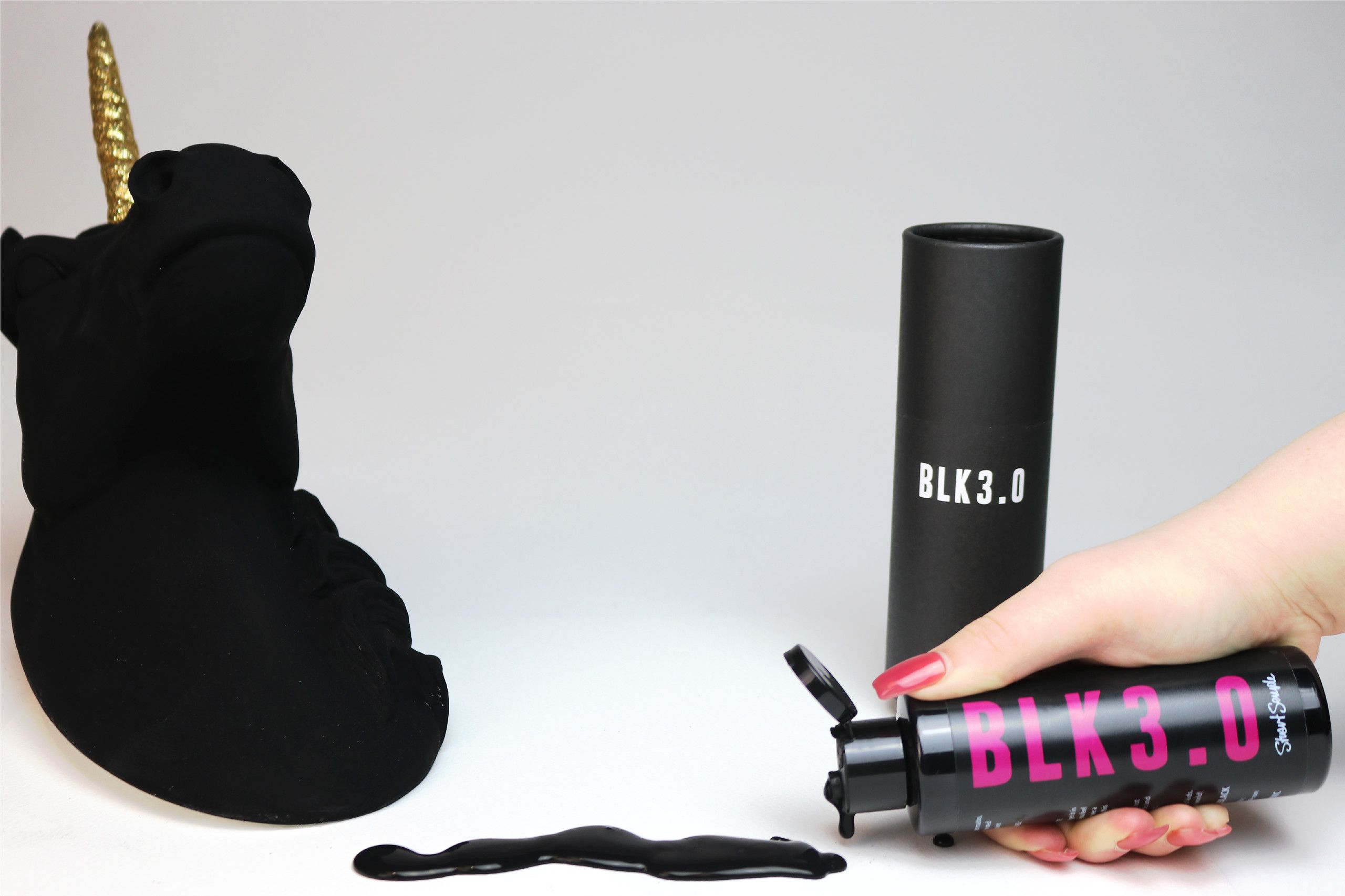 BLACK 3.0
BLACK 3.0
What are in your view the advantages of the digitization of the arts sector?
I think accessibility is the big one, you no longer have to travel. Many people simply can’t afford to get to a cultural centre, or perhaps don’t have the encouragement. The elitism or any fear of looking is removed. I think in the virtual we can do things that you can’t achieve physically so it’s a new playground for artists. I think it’s important to say that this isn’t to replace physical work and real spaces, I see this as an extra layer. Similar to how you can listen to an artist’s music online, and then go and see a concert, and if you are a real fan you can buy a physical copy of a record. The digital should support a wider ecosystem of access and education around the arts.
Many believe the digitization of the art industry will contribute to make it more inclusive and democratic; what is your take?
It will, at least in the short-term but we must be mindful of history, the internet always has this potential. What we have seen is the internet and online disruptive technologies quickly become corporatised. So we must be careful that this evolution of art stays with the creators, the artists and the true innovators.
Speaking of democratisation, you have been on a crusade to make artistic tools – namely, colour paints – available to an ever wider audience of artists and creatives since 2016, when Anish Kapoor purchased exclusive rights to the ‘world’s blackest’ material, Vantablack. After PINK, Black 3.0, Easy Klein and White 2.0, are you currently working on any new paint?
I’m always working on new formulas and recipes. I’m really passionate about giving artists access to new tools to express themselves, and I think there’s still a lot to be done. We are about to release our new SPRAY, which is a device that enables you to reuse any plastic bottle and turn it into a spray can, with nothing but air. So artists can spray any paint they like for the first time.
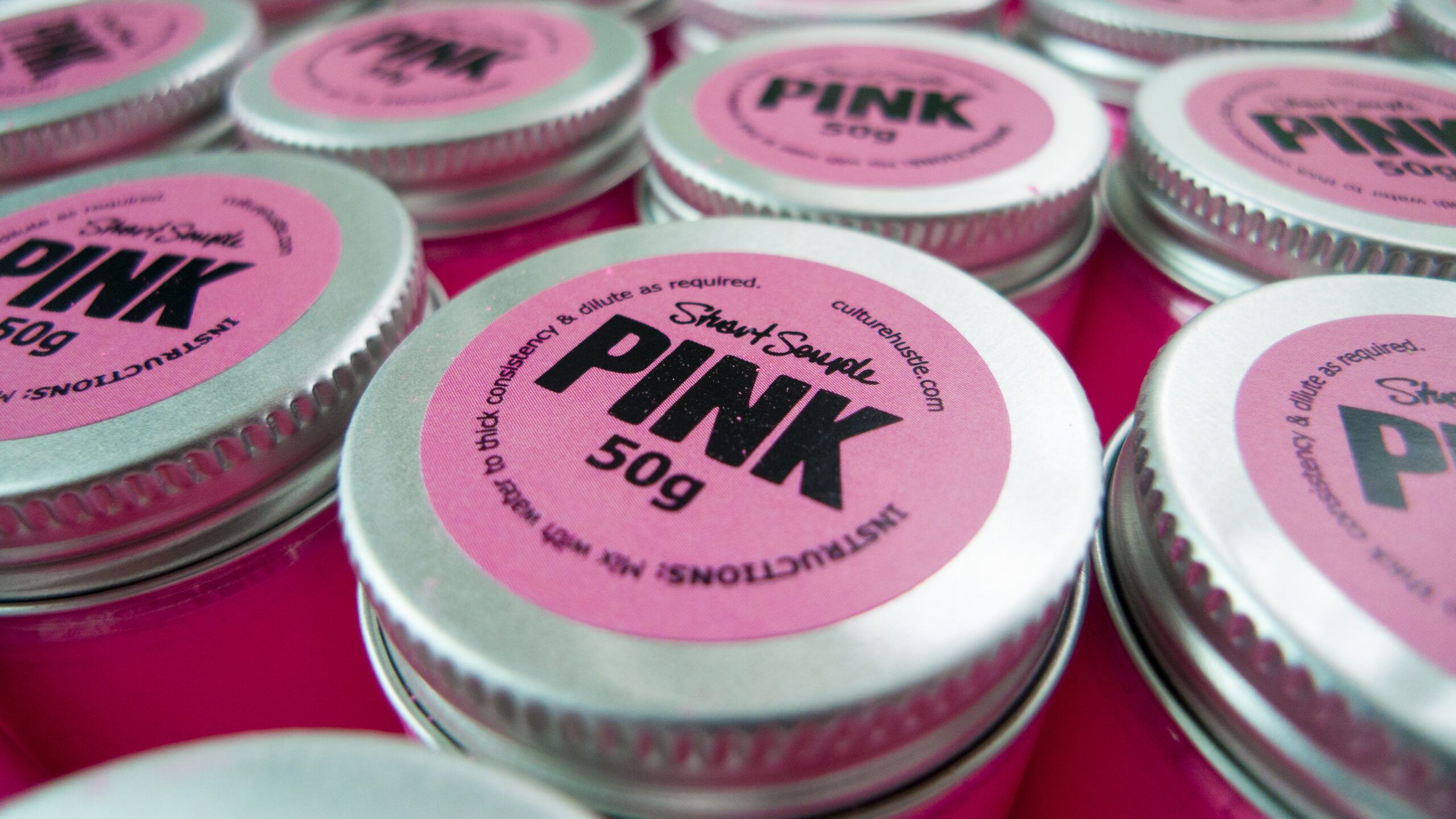 PINK
PINK
Being busy as you are, I am sure you get asked this a lot: how do you make time to work on your art?
That’s a great question. I think the key is that to me everything I do is art, there’s no distinction. So I don’t see art as only painting. Curating the gallery is art, creating art materials is art, recording the podcast is art. In terms of painting though, it’s relatively easy, a lot of my work is collaborative, but painting is a solitary isolated thing. I need both, so I go to my big studio and work with the team and then I go to lock myself in my personal space. Having these two distinct environments enables me to shift between these two ways of making things. That feels healthy, the work I do alone informs what I do in the community, and visa-versa. The issue wasn’t so much time management, it was more to do with shifting gears between different ways of working.
Finally, what have you got lined up for the future?
Opening the new GIANT space in Bournemouth is going to be a huge job, it’s 15,000sq ft and the largest artist-run space outside London. Directing that is a mega task. It’s currently a building site and the opening is soon. I’m also putting together plans for a magazine and producing a sitcom. The big one is this new series of paintings I’m working through. They are slow but I’m starting to find something in them that I hope will be interesting. I’m developing a new system for me to make paintings and they are looking radically different from anywhere I’ve explored before. I’m nervous of them but excited at the same time.
To keep up with Stuart Semple go to www.stuartsemple.com
His colour paints can be purchased here www.culturehustle.com
Feature image © Nadia Amura
Words and interview by Jacopo Nuvolari



